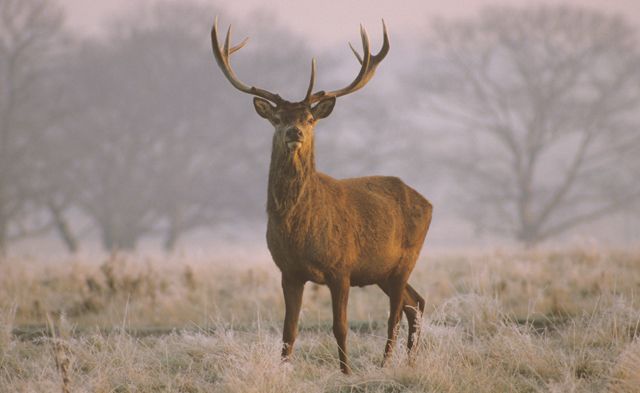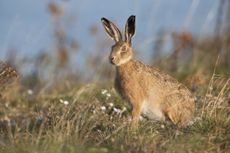The changing face of poaching
A recent anti-poaching conference has heard alarming tales of the new wave of poachers who aren't just looking for a rabbit for the pot

The poaching of gamebirds, fish and deer was so widespread in Edwardian times that one in every 14 convicted criminals was a poacher— today’s equivalent would be 130,000 poaching convictions a year. Convictions in 2014 will number in the low hundreds, which one could interpret as a sign that the crime is no longer significant.
However, according to the recent National Anti-Poaching Conference organised by the National Gamekeepers’ Organisation (NGO), it’s anything but.
Poaching is now classified as a ‘wildlife crime’ and features on a list of six Government priorities in that category—almost every police force in the UK was represented at the conference in Staffordshire. It’s the most prevalent wildlife crime by a country mile, according to Sue Eddy of the National Wildlife Crime Unit (NWCU), who showed a map of where incidents occur—Lincolnshire had 756 recorded incidents last year and Kent 528. The crimes that receive much more publicity—such as badger baiting and raptor persecution— are very rare in comparison. The map showed that poaching in the South-West is predominantly of deer whereas in the East of England, hare coursing is dominant.
According to a recent report on wildlife crime by World Animal Protection, using information from the NWCU, last year, police in South Molton, Devon, found 11 red-deer stags’ heads minus their antlers in a lay-by. In Lincolnshire this year, three men were found guilty of hare-coursing offences after being spotted by a local gamekeeper; they were each disqualified from driving for six months, fined £300 and ordered to pay costs of £600. Gamebirds are taken less these days because their meat value is low compared to that of illegally procured venison. The bigger concern is live capture, a sad indicator that there are shoots still prepared to buy poults cheaply without asking questions. The profile of the fish poacher has changed, too. This is no longer the province of netting gangs on salmon rivers, but is rife around urbanisation.
According to the Angling Trust, fish poachers are far more likely to target coarse fish: large carp and other valuable specimens will be taken live for onward sale to unscrupulous fisheries. Other coarse fish are killed for the pot, often by immigrants from central Europe, where eating them and, sometimes, a public right to catch are part of the culture. Delegates pointed out that one of the disadvantages of poaching being categorised as a wildlife crime is that it can underplay the human impact, not only in lost sporting revenue, but in personal terms. One NGO member from Berkshire had suffered five incursions by poachers in the previous week alone. They’d catapulted gamebirds, driven down deer, trashed gates, torn up newly drilled crops and run their dogs on hares. The estate was left littered with wounded deer, rare wild grey partridge were scattered at night and pheasants scared away from their home woods. However, the keeper pointed out that at least these visitors were ‘runners’ rather than ‘fighters’.
Another gamekeeper, now retired, had been repeatedly threatened and assaulted while dealing with hare poachers in the North-West. This culminated in a tailor’s dummy dressed as a gamekeeper being left for his young children to find. It had a knife stuck in it, was covered in blood and guts and bore a chilling note:
‘This is what will happen to your Dad.’ The NWCU says that, nowadays, many poaching incidents are linked to serious organised crime, from thefts of farm diesel to drug dealing or money laundering. It can be easier for police to catch these criminals when poaching and this has encouraged forces to be more active. Better intelligence about where and when poachers strike, plus technology such as thermal imaging— which is available to keepers as well as the police—and forensic evidence from DNA, blood, soil and pollen can increase conviction rates. The advent of the NWCU and the Poaching Priority Delivery Groups, which bring the police together with shooting and landowning bodies, is helping, as is the national Project
Sign up for the Country Life Newsletter
Exquisite houses, the beauty of Nature, and how to get the most from your life, straight to your inbox.
Trespass to raise public awareness of poaching. The NWCU said there was evidence that more incidents are being reported, partly due to a growing belief in rural communities that, contrary to a few years ago, it’s worth telephoning 999—keepers and landowners should never tackle poachers. Simon Prince, the chief constable who leads the national drive against rural crime, concludes: ‘This illegal activity [poaching] has developed over time into an organised-crime issue with an economic driver. We need to be conscious of how it can impact on rural communities. Working with the NGO in raising awareness with all police forces will help forge stronger links with rural communities in preventing crime and in catching and convicting the offenders.’
Charles Nodder is political advisor to the National Gamekeepers’ Organisation
-
 Chloe Dalton: The woman who swapped top-level geopolitics to rescue a baby hare
Chloe Dalton: The woman who swapped top-level geopolitics to rescue a baby hareAs an expert foreign policy adviser, Chloe Dalton's life revolved around international travel and walking the corridors of power. Then a chance encounter while out on a walk changed her life forever.
By Toby Keel Published
-
 An idyllic home in Hampshire that's perfect for the musical mind
An idyllic home in Hampshire that's perfect for the musical mindLyewood House sits in 3.5 acres and comes with a purpose built recording studio and an outdoor heated pool.
By Arabella Youens Published